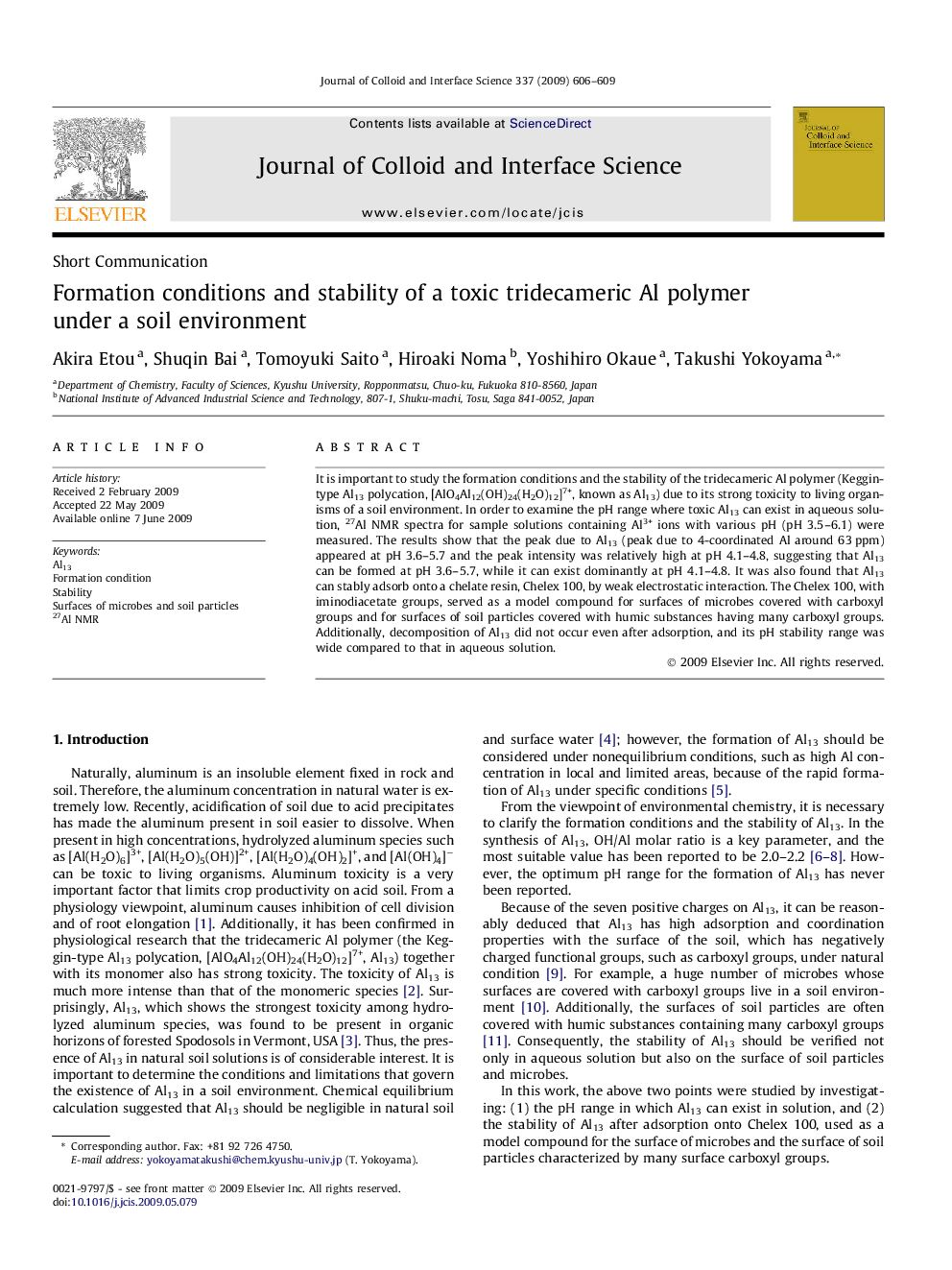| کد مقاله | کد نشریه | سال انتشار | مقاله انگلیسی | نسخه تمام متن |
|---|---|---|---|---|
| 610570 | 880652 | 2009 | 4 صفحه PDF | دانلود رایگان |

It is important to study the formation conditions and the stability of the tridecameric Al polymer (Keggin-type Al13 polycation, [AlO4Al12(OH)24(H2O)12]7+, known as Al13) due to its strong toxicity to living organisms of a soil environment. In order to examine the pH range where toxic Al13 can exist in aqueous solution, 27Al NMR spectra for sample solutions containing Al3+ ions with various pH (pH 3.5–6.1) were measured. The results show that the peak due to Al13 (peak due to 4-coordinated Al around 63 ppm) appeared at pH 3.6–5.7 and the peak intensity was relatively high at pH 4.1–4.8, suggesting that Al13 can be formed at pH 3.6–5.7, while it can exist dominantly at pH 4.1–4.8. It was also found that Al13 can stably adsorb onto a chelate resin, Chelex 100, by weak electrostatic interaction. The Chelex 100, with iminodiacetate groups, served as a model compound for surfaces of microbes covered with carboxyl groups and for surfaces of soil particles covered with humic substances having many carboxyl groups. Additionally, decomposition of Al13 did not occur even after adsorption, and its pH stability range was wide compared to that in aqueous solution.
27Al MAS NMR spectrum for Al13 adsorbed on chelex 100. This spectrum suggests that Al13 can be stably adsorbed onto the surface of microbes by weak electrostatic interaction between negative charges (–CH2COO−) and positive charges ([Al13]7+) without decomposition.Figure optionsDownload as PowerPoint slide
Journal: Journal of Colloid and Interface Science - Volume 337, Issue 2, 15 September 2009, Pages 606–609